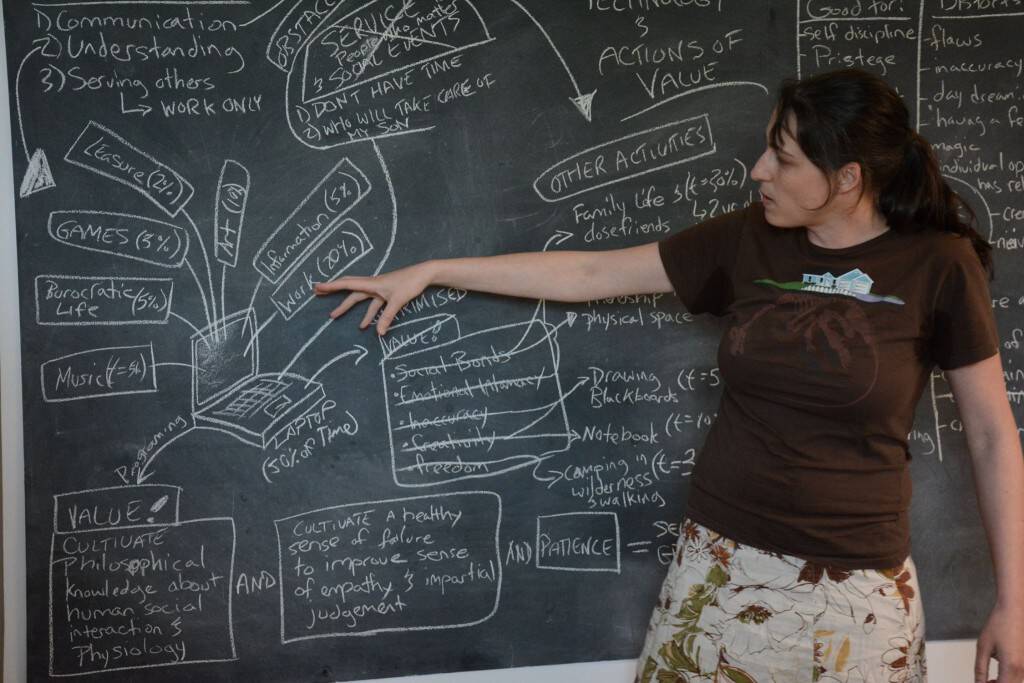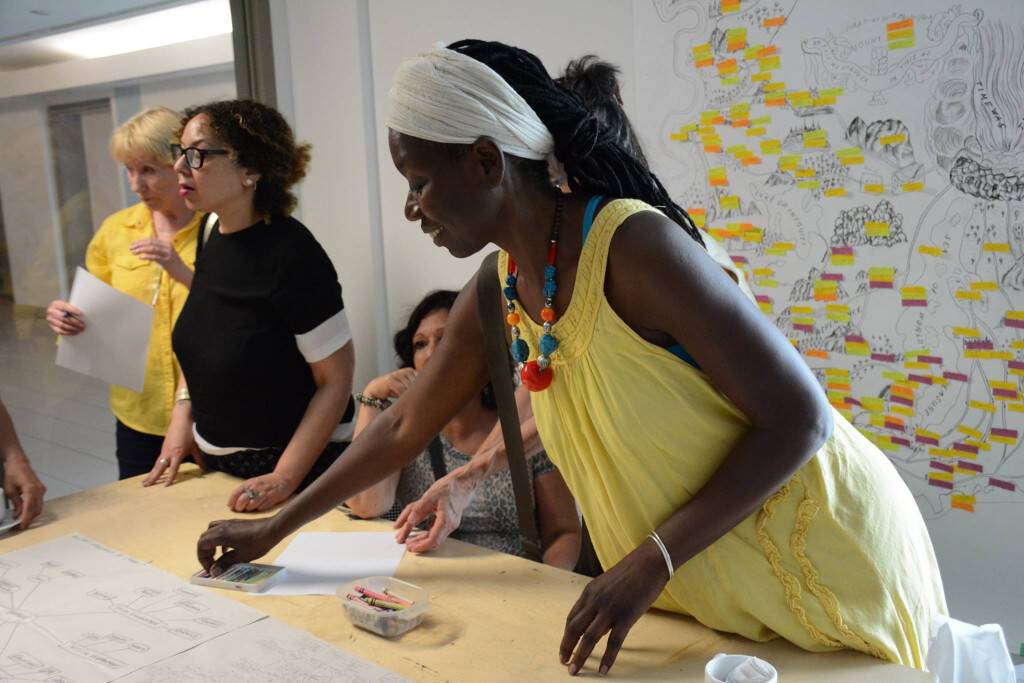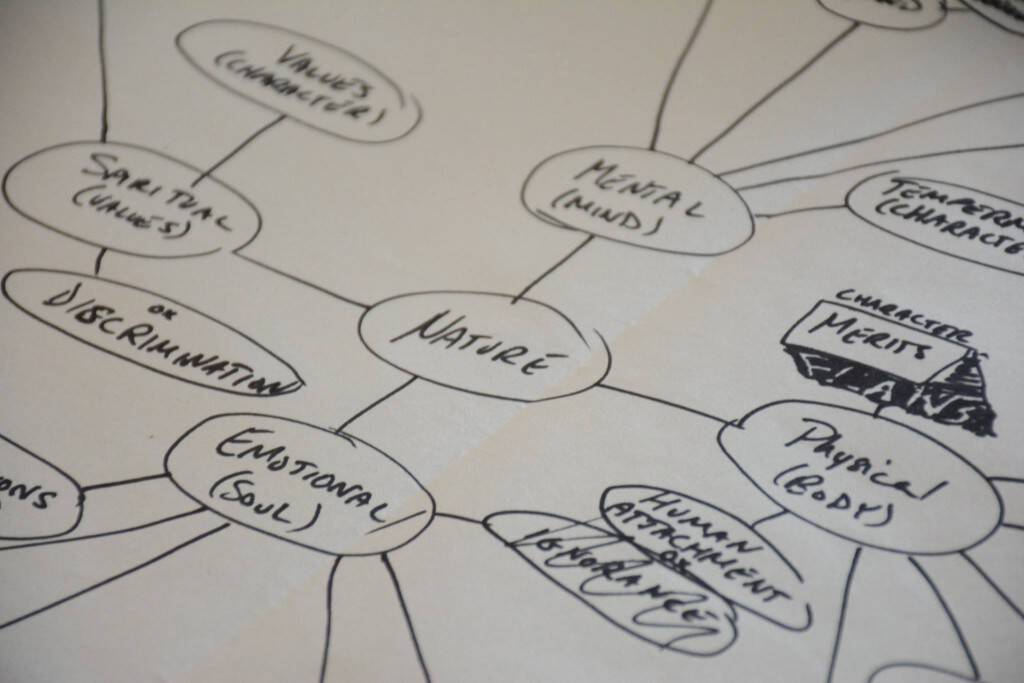Jessica Field is our Art Lab artist in residence from April 25 until July 10. During her residency in the Art Lab, Jessica Field will be experimenting with relational aesthetics and drawing to create a body of work that focuses on the influences that technology and science have on the way people socially develop their identities. Through her performance research, she will be creating fictional spaces and developing relational encounters with participants to create maps of how they relate to technology and science and attempt to place how their subjective values and feelings are connected. Most of Field’s works are parodies on the scientific methods, gender issues and the tension between subjective values, feelings, prestige and how these function in the technological complexity of our current culture. We sat down with Jessica to learn more about what she has been up to in the Art Lab…
The RMG: Hi Jessica! Please tell us a little about yourself.
Jessica Field: I am an artist who has lived in the Durham region for most of my life. Growing up in Pickering and then starting my own family here in Oshawa. I am a very curious person who enjoys spending an exorbitant amount of time trying to answer big questions. I am most fascinated by human nature in how complicated we are, on one hand we can be very dismissive and selfish, yet vulnerable but we have the capacity to choose to be very empathetic, imaginative and offer a safe unbiased space for others depending on how life is effecting us.
RMG: Why did you apply to the Art Lab artist in residence program?
JF: I applied to the Art Lab to experiment with new materials and interact with the public to create interesting conversations and learn more about how we are programmed. I am also very interested in doing research in the RMG’s library and with the collection to assist in informing my work. I am also very excited about working in a large gallery to be inspired by a space designed for exhibiting work and becoming more involved with the Oshawa art community.
RMG: What will you be creating during your residency? What can visitors expect to find in the Art Lab or during one of your performance events?
JF: I will be creating a series of drawings that will attempt to grapple the impossible question of “how we are programmed.” Visitors can expect to see a room full of large format drawings that address these questions. In the coming weeks, there will be glass markers and chalk available for visitors to contribute their impressions of the drawings in the studio. Any visitor will be very welcome to interrupt my work and offer their insights into this impossible question of “how we are programmed” as these interactions are a crucial part of my residency. In this upcoming month, my focus is in the collection of information. Then the work will become about editing and fine tuning the drawing content, this is a space for visitors to enjoy viewing complicated maps and moving or adding their interpretation of what these drawn landscapes could represent.
RMG: Tell us a bit more about your artist workshop on June 12. What will students learn?
JF: The workshop on June 12 will be offering a technique for students to use to help them learn about creating systems and see how a system or methodology can eliminate such creative challenges as creative blocks, the stress of how strong an idea is and to find methods of expanding a personalized idea into something that becomes larger than the person who imagined it in the first place. The strategy of the workshop focuses on utilizing the student’s imagination, ability to empathize and drawing attention to the importance of developing impartial judgment. These values allow people to think in larger terms then their individual selves and thus learn an ability to create artworks that speak to the larger picture of what life is all about which is something everyone has invested interest in understanding on some level. The workshop will offer an activity to help students engage in this space to find their own important contribution to this large discourse that others will value and have the added effect of enriching their own creative goals and interests.
RMG: In a nutshell… what is “relational aesthetics” and how does this principle impact your practice?
JF: Relational aesthetics is rooted in a dissatisfaction in the art market where art is bought and sold. Those who work in this practice are really focused on the experience of art, the experience of seeing something that has qualitative value and can be enriching to a persons life whether this is an experience of awe, revelation or a strong emotional experience that becomes a lasting memory. The art as an object is always in danger of being superficialized by popularity or become convoluted and intimidating by our stress of how the art institution values the work.
Relational aesthetics is an attempt to bring a genuine and meaningful experience between the artist and the viewer where the viewer becomes a collaborator in the experience of the work and integral to its validity. There is an equitable exchange between the artist and viewer where the viewer in their participation receives an experience of value that they should feel compelled to cherish and the artist is given material to assist in creating a project that is larger than themselves and not limited by their personal biases and experience.
The use of relational aesthetics in my project is an honest art practice that can allow me to grapple an impossible topic like “how are you programmed.” I can set up a performance which is really a collaborative exercise with the people who wish to participate and in these actions we carry out together. The objective is to really become aware of human diversity and celebrate these differences as being something valuable and important rather than peculiar or unusual. This creates a space for people to feel comfortable with enjoying the pleasure of imagination, empathy and impartial judgment in a safe space to do so which is my responsibility in executing the performance.
RMG: What inspires you? Is there a particular artist’s work that has inspired your practice?
JF: I have many references that inspire me and my inspirations are always changing and are very fluid. For this residency, I am focused on Yoko Uno’s drawings and instructions from the RMG library, the pilgrimage drawings mapping the roads of life, illustrations of human life created by Christian artists in the 1800s, the Zen Ox herding drawings, and the youTube channel the School of Life. In looking at these very diverse sources, I hope to find commonalities and create maps and flow diagrams. I am also very curious in receiving input from the public on how they relate to these maps and will hopefully offer insight into what this landscape could look like.


